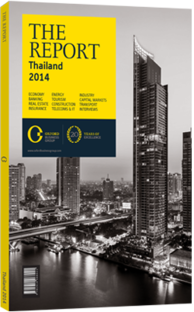OBG talks to Chartsiri Sophonpanich, President, Bangkok Bank

Interview: Chartsiri Sophonpanich
Do you feel that Asia is at risk of a new credit bubble, and how can lending be reigned in?
CHARTSIRI SOPHONPANICH: The credit bubble of the late 1990s was one of the factors behind the 1997-98 Asian financial crisis, and Thai banks and financial authorities wish to avoid such a reoccurrence. Our banks are thus prudent and focused on quality lending. We are applying rigorous Basel III standards and risk-management policies. If the property market gets too exuberant, the banks and regulator will take pre-emptive action such as tightening the lending criteria. From a broader view, Asian markets have been affected by the global economic situation, as low interest rates triggered by the easing monetary policies of many developed nations have led to large inflows into our capital, equity and property markets. While we expect this to end soon, it has already encouraged some property speculation. Individual governments, including Thailand, have therefore taken action to prevent bubbles from developing.
To what extent will government infrastructure projects affect the liquidity of the financial system?
CHARTSIRI: The planned infrastructure projects are estimated to cost $70bn, which will drain some liquidity from the system. However, the investments will take place over seven to eight years and funds will be raised in various ways, such as through launching infrastructure funds and encouraging investment via public-private partnerships. Government investment would also stimulate economic growth and attract foreign direct investment, which would provide more liquidity. The banking sector should have sufficient liquidity to support our investment needs.
What was the rationale behind the decision from Thai banks not to lower interest rates?
CHARTSIRI: When the Bank of Thailand (BOT) reduced the policy interest rate by 25 basis points in May 2013, some observers were surprised that commercial banks did not follow suit. The reason was because during most of 2013 deposit rates rose due to competition between banks for deposits. Liquidity had been expected to tighten with the predicted phasing out of the Federal Reserve’s programme of quantitative easing, while public sector borrowing in Thailand for major infrastructure projects was also expected to increase. Given these various factors, it was prudent for banks to maintain or raise deposit rates to secure our long-term funding base, although rates did fall later in the year.
Is there scope to introduce extraordinary measures to stabilise the baht?
CHARTSIRI: Although the baht rose strongly in the first half of 2013 due to significant capital inflows, this situation was reversed in the second half of the year. By November, the currency had fallen substantially from its highs earlier in the year so there was no need for extraordinary measures. Overall, given high levels of foreign reserves, the BOT has been able to effectively manage the currency to avoid volatility.
How do you assess the level of competition within the Thai banking sector?
CHARTSIRI: As the banking sector becomes more developed the authorities will allow more competition, and this is what Thailand has seen over the past 15 years.
Foreign banks comprised 10-12% of the market in 2013, with this ratio likely to rise further.
The regulators in Thailand take a balanced approach between encouraging competition and providing stability in our financial system. Under the Financial Sector Master Plan Phase II, foreign banks, which were previously permitted to have one branch, may now apply for two additional branches. As such, the BOT issued a new set of regulations in June 2013 enabling qualified foreign commercial banks to establish subsidiaries, which will be permitted to open up to 20 branches in total. As part of the ASEAN Economic Community blueprint, the authorities are also working to allow “Qualified ASEAN Banks” to expand regionally.
You have reached the limit of premium articles you can view for free.
Choose from the options below to purchase print or digital editions of our Reports. You can also purchase a website subscription giving you unlimited access to all of our Reports online for 12 months.
If you have already purchased this Report or have a website subscription, please login to continue.

